The Low Emissivity Film Industry is expected to reach US$ 335.8 Million in 2023, with further growth anticipated to exceed US$ 536.6 Million by 2033, registering a steady CAGR of 4.8% throughout the forecast period.
As outdoor temperatures continue to soar beyond our control, the installation of low emissivity films emerges as a game-changer. These films effectively curtail indoor heat by blocking an impressive 99% of UV rays, consequently leading to a surge in product adoption.
In an era marked by heightened apprehensions about escalating energy usage and the imminent specter of climate change, the imperative to employ such films gains paramount importance. This imperative drives the market forward, fostering its sustained growth.
Request Sample Copy of the Report: https://www.futuremarketinsights.com/reports/sample/rep-gb-17550
Drivers:
- Energy Efficiency Regulations: Stringent energy efficiency regulations and standards implemented by governments worldwide drive the adoption of Low-E films. These regulations often require buildings to meet specific energy efficiency criteria, promoting the use of energy-saving technologies like Low-E films.
- Rising Energy Costs: As the cost of energy continues to increase, businesses and homeowners seek cost-effective ways to reduce energy consumption. Low-E films help to insulate buildings, reducing the need for heating and cooling, thus saving on energy bills.
- Environmental Concerns: Growing awareness of environmental issues, such as climate change and greenhouse gas emissions, encourages the use of energy-efficient solutions like Low-E films to reduce carbon footprints.
- Advancements in Film Technology: Ongoing research and development efforts lead to the creation of more effective and versatile Low-E films, expanding their applications and improving their performance.
- Increased Construction Activity: A rise in construction and renovation projects, particularly in residential and commercial sectors, boosts the demand for energy-efficient building materials, including Low-E films.
Restraints:
- Initial Cost: The upfront cost of purchasing and installing Low-E films can be relatively high. This cost can deter some potential users, particularly in regions with limited budgets for energy-efficient improvements.
- Installation Complexity: Installing Low-E films requires expertise to ensure they are applied correctly. In some cases, installation challenges can be a barrier, and improper installation may lead to suboptimal performance.
- Aesthetics and Visibility: Some Low-E films can affect the clarity of windows or change their appearance, which may be undesirable for certain applications or architectural designs.
- Competing Technologies: Alternative technologies for energy efficiency, such as insulated windows and smart glass, can compete with Low-E films in the market, affecting their adoption in some cases.
- Market Awareness: Not all potential users are aware of the benefits and existence of Low-E films, which can hinder adoption. Effective marketing and education are essential to overcome this challenge.
- Local Building Codes: Local building codes and regulations may not always encourage or mandate the use of Low-E films, limiting their adoption in specific regions.
Request Report Methodology: https://www.futuremarketinsights.com/request-report-methodology/rep-gb-17550
Market Players:
- Eastman Performance Films, LLC.
- Guardian Bastille
- Madico, Inc.
- TintFX
- All American Window Tinting, Inc.
- Tenco Construction Company
- 3M
- Campbell Window Film
- Epic Solar Control
- Manchester Window Film Company
- Epner Technology, Inc.
- Shandong Senhong Glass Co.,Ltd
Ask an Analyst: https://www.futuremarketinsights.com/ask-the-analyst/rep-gb-17550
Market Segmentation:
By Film Type:
- Passive Low E-Film
- Solar Control Low E-Film
- Spectrally Selective Low E-Film
- Conductive Low E-Film
By Application:
- Windows
- Automotive Glass
- Display Panels
By End Use:
- Food
- Automotive
- Building & Construction
- Electrical & Electronics
By Region:
- North America
- Latin America
- East Asia
- South Asia & Pacific
- Western Europe
- Eastern Europe
- Central Asia
- Russia & Belarus
- Balkan & Baltic Countries
- Middle East and Africa (MEA)
Buy Now/Purchase: https://www.futuremarketinsights.com/checkout/17550
About Future Market Insights (FMI)
Future Market Insights, Inc. (ESOMAR certified, recipient of the Stevie Award, and a member of the Greater New York Chamber of Commerce) offers profound insights into the driving factors that are boosting demand in the market. FMI stands as the leading global provider of market intelligence, advisory services, consulting, and events for the Packaging, Food and Beverage, Consumer Technology, Healthcare, Industrial, and Chemicals markets. With a vast team of over 5000 analysts worldwide, FMI provides global, regional, and local expertise on diverse domains and industry trends across more than 110 countries.
Contact Us:
Future Market Insights Inc.
Christiana Corporate, 200 Continental Drive,
Suite 401, Newark, Delaware – 19713, USA
T: +1-845-579-5705
For Sales Enquiries: sales@futuremarketinsights.com
Website: https://www.futuremarketinsights.com
LinkedIn| Twitter| Blogs | YouTube
